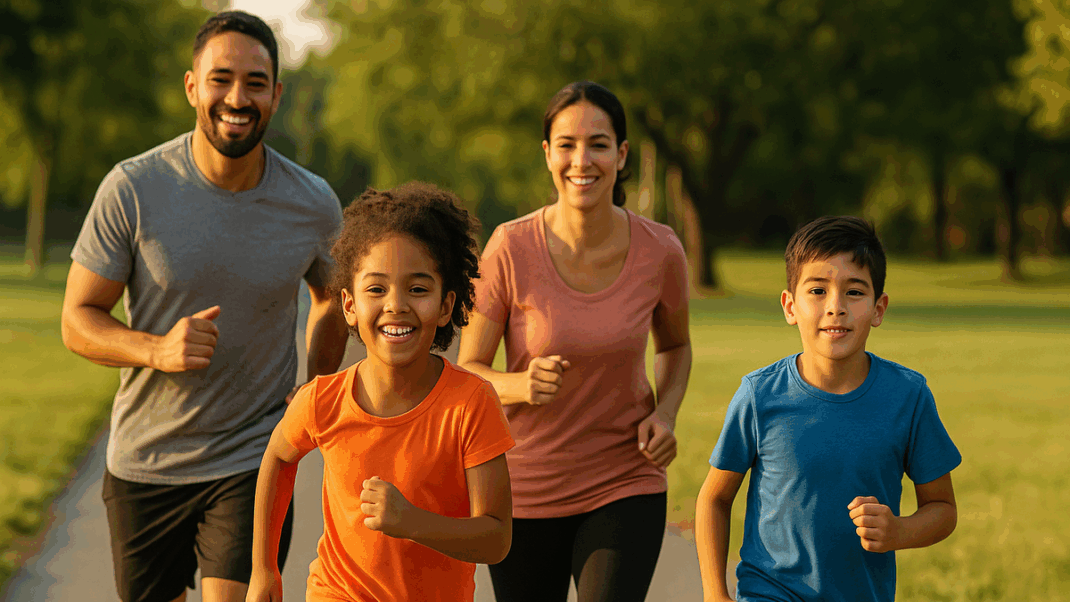The Power of Simple Lifestyle Changes
Use these easy-to-adopt lifestyle choices to help older clients improve their health and fitness.

Lifestyle choices have a significant impact on quality and length of life. With many Americans living longer than ever, fitness pros are on the front lines of a complex challenge: How will we help people remain active and engaged from their 60s into their 90s and beyond? How can we help them stay healthy to rein in healthcare costs?
I believe the answers lie in simple choices—small “doable” changes that don’t overwhelm people by asking them to try too much too quickly. Like compound interest, these little changes make a big difference over time.
But how do we simplify our choices? One excellent roadmap comes from author and leadership expert Simon Sinek. In his book Start With Why (Penguin 2009), he suggests boiling down our challenges to three questions: why, how and what.
- “Why” is our belief and purpose—the thing that inspires us and those around us to seek a healthier and happier life. It’s also the simple rationale for making a change.
- “How” is the nuts-and-bolts process of acting on “why.” The simpler it is, the easier it is to adopt.
- “What” is the straightforward result of these actions.
- Use the following collection of simple choices with your older clients to incorporate the why, how and what of their reasons to change.
Fitting Fitness Into Their Lives
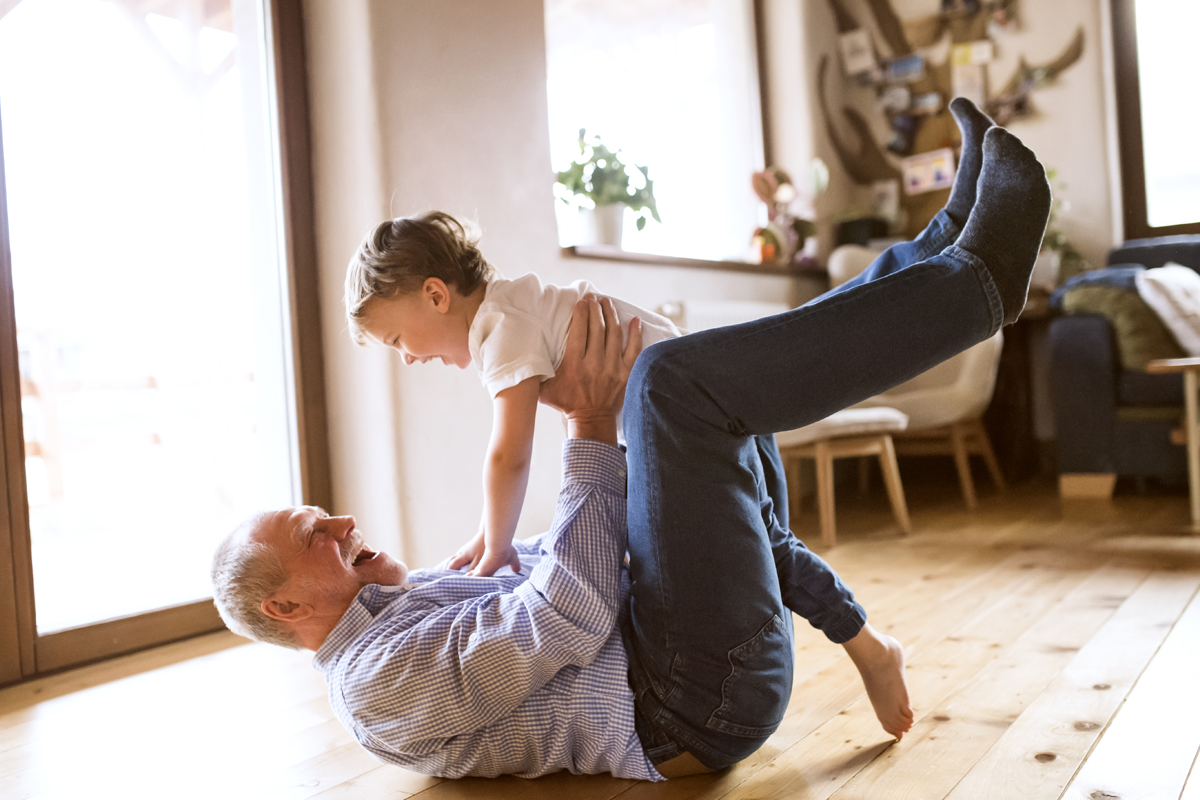
Why: It’s imperative to overcome the number-one excuse for not exercising: “I don’t have time.”
How & What: Provide strategies for fitting fitness into a day. Exercising in shorter bouts and integrating activities into social activities are simple, powerful fixes. Focusing on a goal of high cardiorespiratory fitness is crucial because it’s a modifiable indicator associated with a long life (Mandsager et al. 2018).
SHORT TAKES
Give these options a try:
- Do 20 minutes of Tabata or HIIT training.
- Take two to three 10-minute walks per day or four to six 5-minute walks.
- Do a 20-minute cardio/strength workout.
SOCIAL STRATEGIES
Suggest exercising together:
- Walk with a friend to pair exercise with socialization.
- Ride a bike or get on an elliptical while watching TV.
- Make a workout date or take a dance class with a significant other.
CASUAL ACTIVITIES
Work some movement into otherwise sedentary times of the day:
- Do squats, lunges, yoga poses or core exercises during TV commercials.
- Make a “joy dance” playlist of favorite songs, and dance whenever there’s an opportunity.
Embracing the Power of Posture

Why: Good posture gives the digestive and respiratory systems the space they need to do their work; keeps the musculoskeletal system balanced, to prevent injury or falls; and improves self-confidence. Good posture also looks good!
How & What: In your personal training sessions or group exercise classes, use posture training to teach good form for sitting and standing.
SIMPLE POSTURE EXERCISES
Use these cues for sitting and standing posture:
- Sit or stand tall, lengthening the spine.
- Drop the shoulders away from the ears.
- Open the chest, drawing the shoulder blades together in back.
- Tuck the chin back.
Source: Eckmann & Stoddardt 2015.
Forward-Head Prevention
- Sit or stand using the directions above.
- Interlace the fingers, placing them at the base of the skull.
- Press the skull into the hands, bringing the ears over the shoulders.
SHOULDERS
Roll the shoulders (backward only) up and back while squeezing the shoulder blades together behind the back.
- Do a “shoulder blade squeeze” by making “goal-post arms” at shoulder level, keeping the elbows even with the shoulders, hands forward, palms down. Imagine a tennis ball between the shoulders and squeeze, pulling the arms and shoulders back.
Sitting Less, Moving More, Boosting NEAT
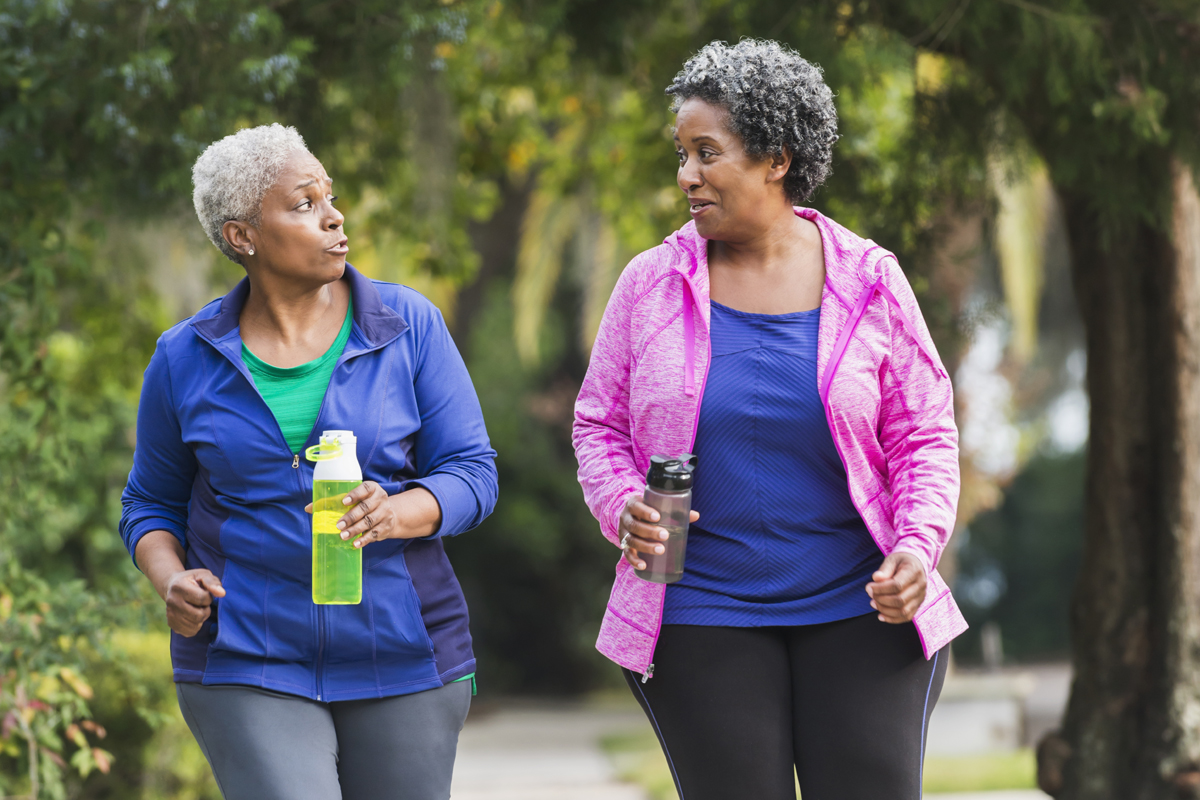
Why: Extended sitting is a major health hazard. Movement boosts nonexercise activity thermogenesis (NEAT).
How & What: Challenge clients to take the “30 & 3” or “20 & 2” challenge. That means moving for 3 minutes after every 30 minutes of sitting or for 2 minutes after every 20. Provide simple and important movement ideas so clients will boost their NEAT by sitting less and moving more.
NEAT MOVEMENT IDEAS
- March in place, seated or standing.
- Stand up and sit down, or stand up and sit halfway down.
- Walk 2–3 minutes.
- Stand and do hamstring curls, bringing one heel to the buttocks at a time.
- Stand and do alternate-leg toe taps—1, 2, 3, 4, 5 on each side.
- Put on great music and do a joy dance.
- Do a hip-ham rock: Put one foot in front of the other and sit into the back hip while bringing the toes of the front leg up to stretch the gastroc-soleus and rock forward to the point of tightness in the back hip. Repeat and then change sides.
Encourage Activity Tracking

Why: Wearable technology is one of the top fitness trends for good reason (Thompson 2018). Wearing an activity tracker improves people’s sense of health empowerment, which in turn influences lifestyle choices and helps foster commitment to change (Nelson, Verhagen & Noordzij 2016). Research shows that 80% of activity tracker owners stick with devices after using them for 6 months. Thus, getting clients started and hooked can be instrumental in changing behavior and improving overall health (Patel et al. 2017).
How & What: The Fitbit, the Apple Watch and many more devices count steps and track a host of healthy-living criteria. Among the findings:
- Wearable devices increase activity levels and help users lose weight (Coughlin & Stewart 2016).
- Activity trackers can in­crease physical activity in older adults, possibly because the devices help them monitor behavior, obtain feedback on its effectiveness and create accountability for achieving goals (Mercer et al. 2016).
STEP-COUNTING TIPS
- Help clients set up wearable technologies to reinforce goals. Many devices allow users to send messages after hitting a moving, standing and/or exercise goal. Help people configure these announcements.
- Urge clients to set themselves a daily step goal and work up to it. Start with a baseline: Have clients document daily steps for a week to get an average daily count. Challenge clients to increase steps by up to 2,000 a day for the first week and by 500-1,000 each week after that, until they reach their goal.
- Create individual and group challenges. For example, clients can join a team and post team steps weekly in a visible area. Scale a map for a certain number of steps to a mile and have teams walk the miles required to visit a desirable vacation spot.
- For individual challenges, have clients place a chart by their bed or on a bathroom mirror and document steps at the end of each day.
- Send motivational texts daily or weekly: This is a proven tactic for boosting activity levels (Coughlin & Stewart 2016).
- Provide simple tips on increasing steps: Park farther away when shopping, walk during phone conversations, or do a walk-and-talk meeting or walk with a friend instead of meeting for lunch or drinks.
Practicing Yoga
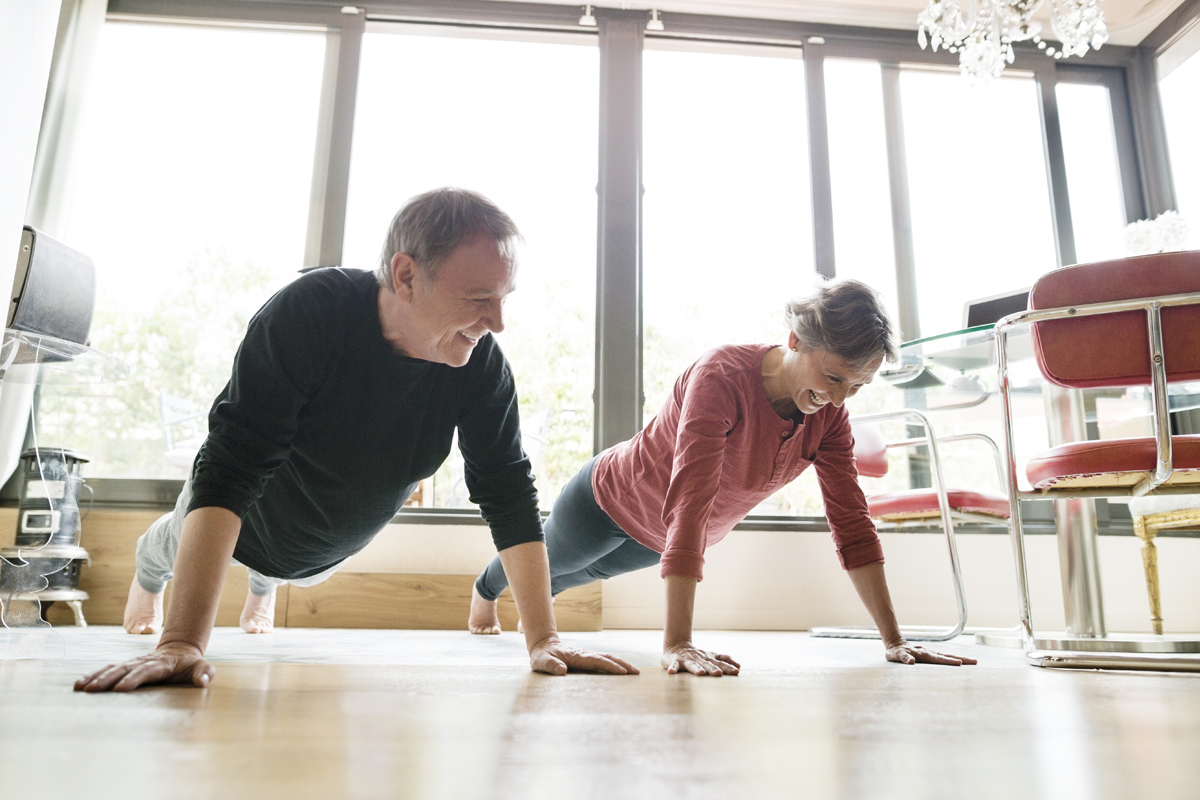
Why: Ancient yoga practices improve health in dozens of ways (McCall 2007). Yoga requires no machinery and very little equipment beyond a mat, making it an easy lifestyle choice, and it improves health just as effectively as other types of exercise (Ross & Thomas 2010).
How & What: Regular yoga practice improves well-being through four focus areas:
- poses (asana)
- simple flow sequences
- breathing techniques (pranayama)
- mindfulness and meditation
Results of proper yoga practice:
- improvements in posture, strength, flexibility, balance and proprioception
- a stronger immune system, better brain health
- reductions in pain, stiffness, arthritis symptoms, stress, anxiety, depression, PTSD symptoms
- injury prevention and re­­duced risk for heart disease
- improvements in mood, eating habits and self-efficacy
YOGA POSES FOR HEALTH GOALS
- digestion: seated spinal twist, twisted chair, twisted lunge, puppy pose, knees to chest, supine twist
- stress management: extended mountain pose, chest opener, warrior I, lunge, pyramid, pigeon, forward fold, prone corpse pose
- arthritis: modified sun salutation, reclined cobbler’s pose, seated or standing sunflower, child’s pose, cat-cow (seated, standing or quadruped), pelvic tilt
- back pain: cat-cow (variation: sway hip to the side, looking toward the hip), cobra, sphinx pose, downward-facing dog, puppy pose, knees to chest, single knee to chest
- heart health: mountain pose, big-toe hold, seated forward bend, easy seated pose
- sleep: easy seated twist, supine spinal twist, happy baby, reclining bound-angle pose, legs up the wall, corpse pose
SIMPLE FLOWS
- mountain, extended mountain, chest opener, warrior I lunge, warrior I, pyramid
- forward fold, downward-facing dog, cat-cow, prone corpse
- easy seated pose, seated spinal twist, knees to chest, supine twist
- sun salutation
- seated or standing sunflower, standing cat-cow
- reclining cobbler’s pose, pelvic tilt, supine feet on floor with knee sways
- seated spinal twist, half lord of fishes, seated cat-cow
- mountain pose, extended mountain pose, big-toe hold
- downward-facing dog, puppy pose, cobra, sphinx
BREATHING PRACTICES
- 1:2 ratio breathing: Breathing through the nose, make the exhalation twice as long as the inhalation. For example, if you breathe in for 2 seconds, breathe out for 4 seconds.
- Square breathing: Breathe in for 4 counts, hold for 4 counts, breathe out for
4 counts, and pause for 4 counts. With each inhalation and exhalation, say one. - Alternate-nostril breathing: Using the right thumb, gently close the right nostril and inhale slowly through the left nostril. Then close the left nostril with the ring finger, pause, open the right nostril and exhale slowly through it. Inhale slowly through the right nostril and then close it with the thumb, pause, and exhale slowly through the left nostril. Inhale slowly through the left nostril and repeat the sequence.
- Making the “ha” sound. Breathe in through the nose, and as you breathe out through the mouth, make a quiet “ha” sound.
MEDITATION AND MINDFULNESS RESOURCES
- apps: Insight Timer, Head­space, Breathe, Calm
- websites: GAIA.com, mindful.org
- books: 101 Mindfulness & Meditation Practices (Healthy Learning 2018), 10-Minute Mindfulness (Oldtown Publishing 2017), Practicing Mindfulness (Althea Press 2018)
The Case for Simple Choices
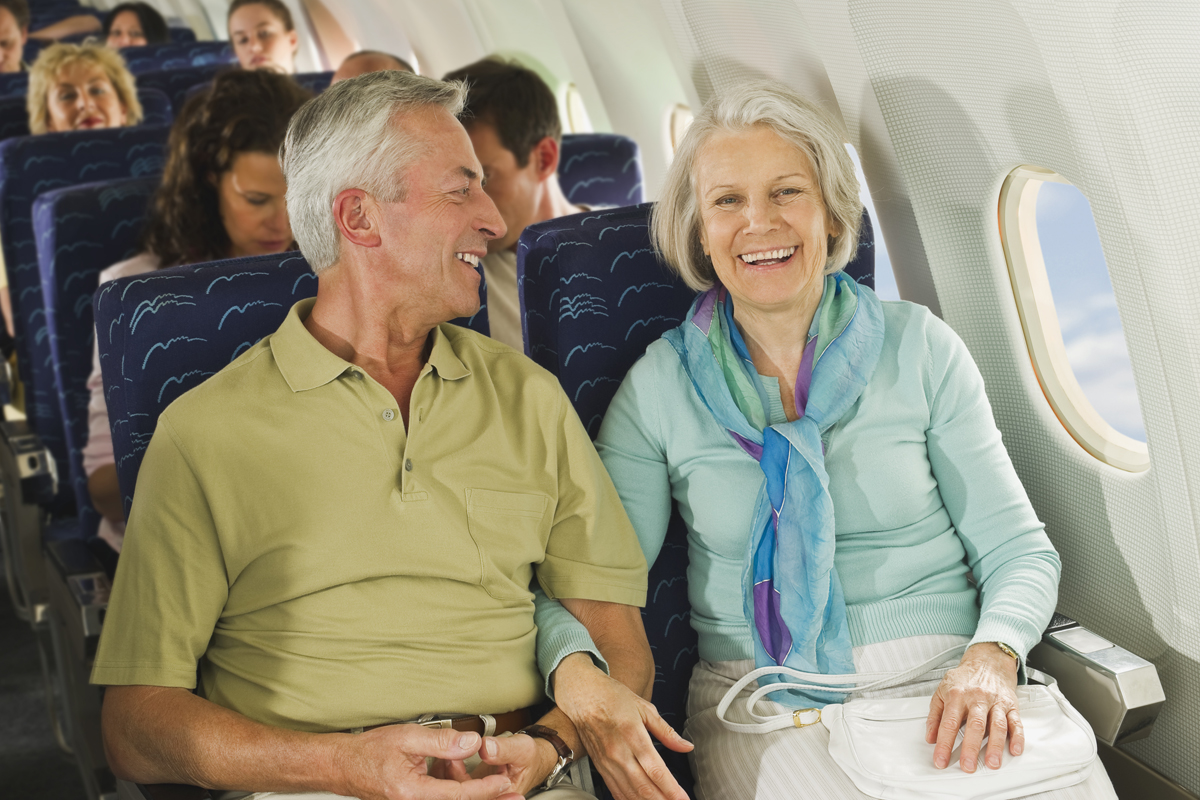
Staying active helps older clients enjoy travel, play with their grandchildren and keep up leisure activities they enjoy. It also improves or maintains physical, mental and cognitive health, while helping older adults to feel better, look better and live well.
Teaching your clients to make simple choices will help them understand why movement matters. And teaching them strategies and actions they can implement will help them achieve their goals: good overall health, a balanced lifestyle, lower medical costs and a higher quality of life.
Mindset is key to implementing these changes—studies prove that what we know and think influences outcomes (McGonigal 2015; Crum & Langer 2007). Clients who embrace a mindset that physical activity is beneficial are better poised to make smart lifestyle choices. By helping clients adopt a movement mindset, you can change their lives one choice at a time.
See also: Nutrition Adherence: Making Lifestyle Changes That Stick
The Big Why
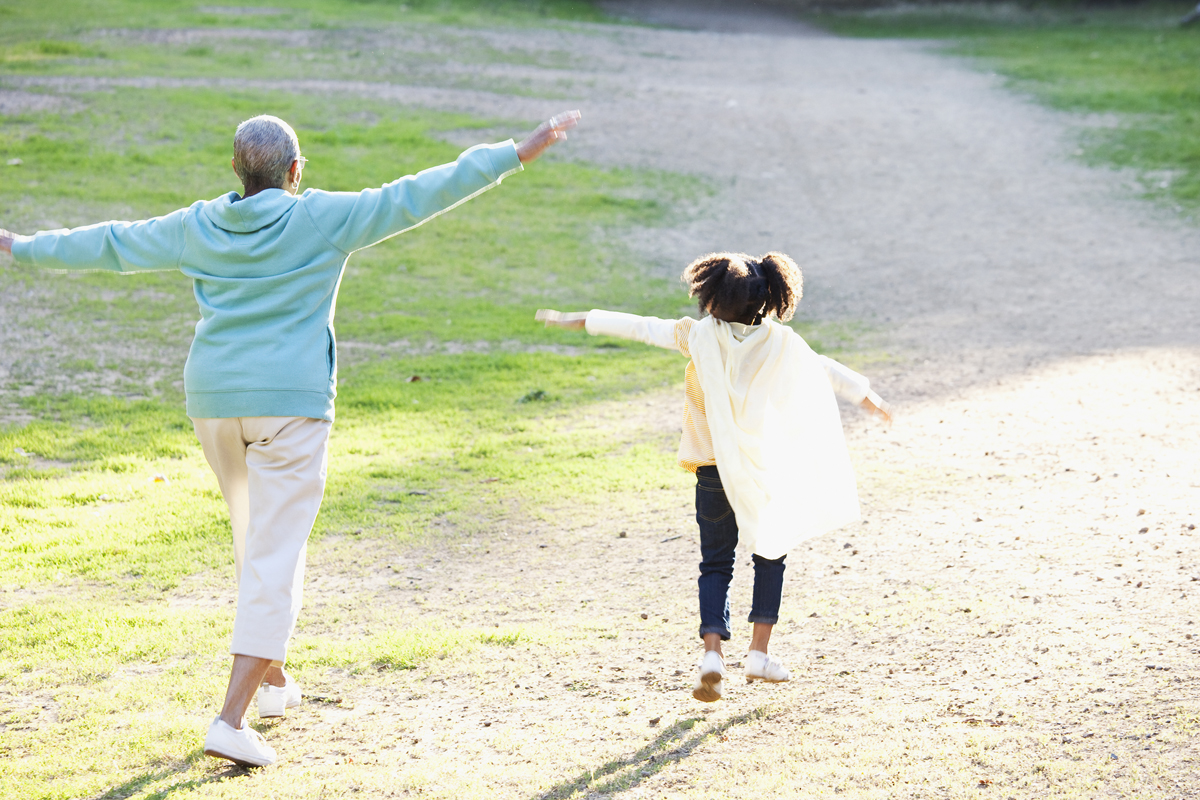
Baby boomers will all be older than age 65 by the year 2030, meaning that 1 in every 5 residents of the United States will be of retirement age. Older people will outnumber children (under age 18) for the first time in history (U.S. Census Bureau 2018).
Physical inactivity is a financial burden. In the United States, an estimated $117 billion in annual healthcare costs and about 10% of premature deaths are associated with inadequate physical activity (Piercy et al. 2018). Approximately 12.5% of healthcare expenditures are associated with lack of physical activity (Carlson et al. 2015).
Keeping older adults healthy and as active as possible will be essential to lessen the economic impact associated with aging baby boomers (Knickman & Snell 2002).
There will be an increasing need for fitness professionals to specialize in corrective exercise and behavior management. Fitness leaders with high emotional intelligence and effective instructional skills are needed to Inspire the World to Fitness®, facilitate healthy aging, lower healthcare costs, and help the aging population maintain or improve quality of life.
Watch Terry Eckmann’s TEDx speech explaining “The Power of Simple Choices” below:
References
Carlson, S.A., et al. 2015. Inadequate physical activity and health care expenditures in the United States. Progressive Cardiovascular Disease, 57 (4), 315–23.
Coughlin, S.S., & Stewart, J. 2016. Use of consumer wearable devices to promote physical activity: A review of health intervention studies. Journal of Environmental and Health Science, 2 (6).
Crum, A.J., & Langer, E.J. 2007. Mind-set matters: Exercise and the placebo effect. Psychological Science, 18 (2), 165–171.
Eckmann, T., & Stoddardt, D. 2015. The power of posture: A program to encourage optimal posture. Journal of Active Aging, 14 (4), 54–68.
Knickman, J.R., & Snell, E.K. 2002. The 2030 problem: Caring for aging baby boomers. Health Services Research, 37 (4), 849–84.
Mandsager, K., et al. 2018. Association of cardiorespiratory fitness with long-term mortality among adults undergoing exercise treadmill testing. JAMA Network Open, 1 (6), e183605.
McCall, T. 2007. Yoga as Medicine: The Yogic Prescription for Health and Healing. New York: Bantam.
McGonigal, K. 2015. The Upside of Stress. New York: Penguin Random House.
Mercer, K., et al. 2016. Behavior change techniques present in wearable activity trackers: A critical analysis. JMIR MHealth and UHealth, 4 (2), e40.
Nelson, E.C., Verhagen, T., & Noordzij, M.L. 2016. Health empowerment through activity trackers: An empirical smart wristband study. Computers in Human Behavior, 62, 364–74.
Patel, M.S., et al. 2017. Using wearable devices and smartphones to track physical activity: Initial activation, sustained use, and step counts across sociodemographic characteristics in a national sample. Annals of Internal Medicine, 167 (10), 755–57.
Piercy, K.L., et al. 2018. The Physical Activity Guidelines for Americans. JAMA, 320 (19), 2020–28.
Ross, A., & Thomas, S. 2010. The health benefits of yoga and exercise: A review of comparison studies. The Journal of Alternative and Complementary Medicine, 16 (1), 3–12.
Thompson, W.R. 2018. Worldwide survey of fitness trends. ACSM Health and Fitness Journal, 22 (6), 10–17.
U.S. Census Bureau. 2018. Older people projected to outnumber children for first time in U.S. history. Accessed Jan. 2019: census.gov/newsroom/press-releases/2018/cb18-41-population-projections.html.

